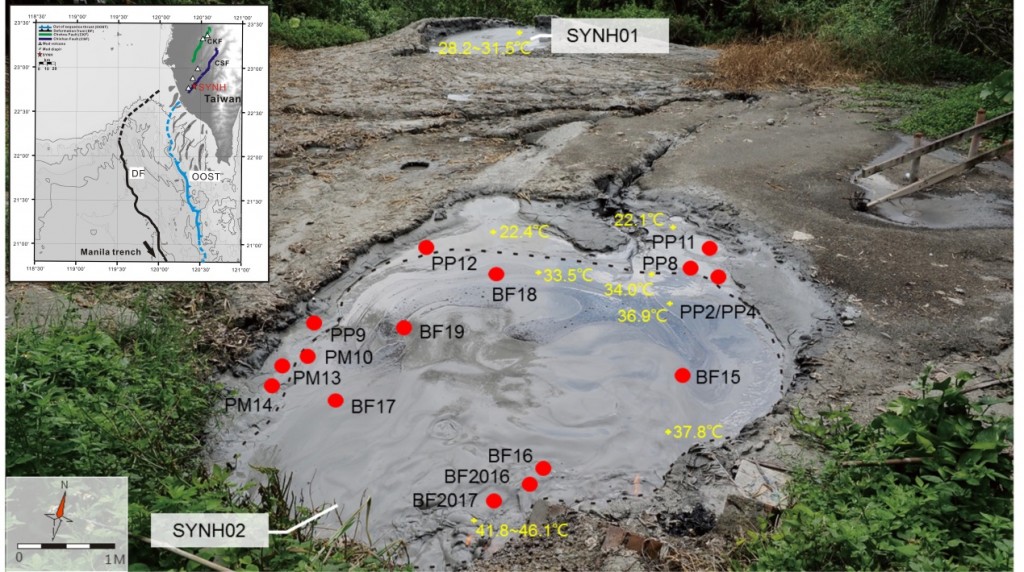Steep redox gradient and biogeochemical cycling driven by deeply sourced fluids and gases in a terrestrial mud volcano
Pei-Ling Wang
Microbial in subsurface environments would have exerted a profound impact on the cycling of carbon, nitrogen, and sulfur between crust, hydrosphere, and atmosphere on contemporary and geological time scales. Mud volcanoes (MVs) could provide a direct, effective means to recover deep microbial communities and fluid characteristics. Determining the microbial composition and functional activity would provide insight to help assess the mitigation of greenhouse gas emission in MV systems. Despite the continuous delivery of deeply sourced materials into surface environments, the penetration of atmospheric oxygen appears to be the most striking, through which the reducing power inherited from the upward migratory fluids is counteracted. Whether the pattern and magnitude of oxygen penetration and the dominant metabolisms responsible for oxygen consumption in marine settings could be directly extrapolated to terrestrial counterparts with an infinitely large oxygen reservoir and scarce sulfate is not well constrained.
A research team including the researchers and students at our Institute and Dept. of Geosciences in NTU, selected a methane-rich terrestrial mud volcano, Shin-Yan-Ny-Hu (SYNH) MV of southwestern Taiwan, to examine the redox transition, biogeochemical fluxes, and microbial communities (Figure 1). A combination of microbial communities and metagenomic data obtained by Next Generation Sequencing technology with all kinds of porewater geochemical data demonstrate the interaction between microbial community structures and porewater geochemistry. A steep redox transition, with oxygen penetration being confined to the upper 4 mm of pool fluids or muds in the pool periphery dominate the geochemical and molecular characterization of samples retrieved from different compartments of the SYNHMV. Flux calculations indicate that the oxidation of dissolved sulfide and pyrite is an important driver for oxygen consumption at the air-fluid/mud interface. The steep oxygen gradient was underlain by the compartmentalization of anaerobic metabolic reactions, including sulfur oxidation, sulfate reduction, anaerobic oxidation of methane and methanogenesis along the depth of the pool periphery. Such metabolic zonation and organization facilitate the efficient consumption of upward-migrating methane produced in situ. (Please find the details in the extended material.)
Overall, the results demonstrated that the reducing, sterilized fluids originating from great depths were seeded with microbial populations during upward transport along the fracture network. These microorganisms form a metabolic architecture that drives intensive cycling of sulfur, methane and organic carbon along the redox transitions, altering the physico-chemical context of the mud pool and pool periphery (Figure 2).
Lin, Y.-T., Tu, T.-H., Wei, C.-L., Rumble, D., Lin, L.-H., Wang, P.-L. (2018) Steep redox gradient and biogeochemical cycling driven by deeply sourced fluids and gases in a terrestrial mud volcano. FEMS Microbiology Ecology, 94(11), fiy171. doi: 10.1093/femsec/fiy171
Available at:
https://academic.oup.com/femsec/article-abstract/94/11/fiy171/5079636
Figure 1. A field photo with sampling positions of SYNH mud volcano.
Figure 2. A synthetic model for deep fluid transportation along with various microbial activities in a terrestrial mud volcano.












